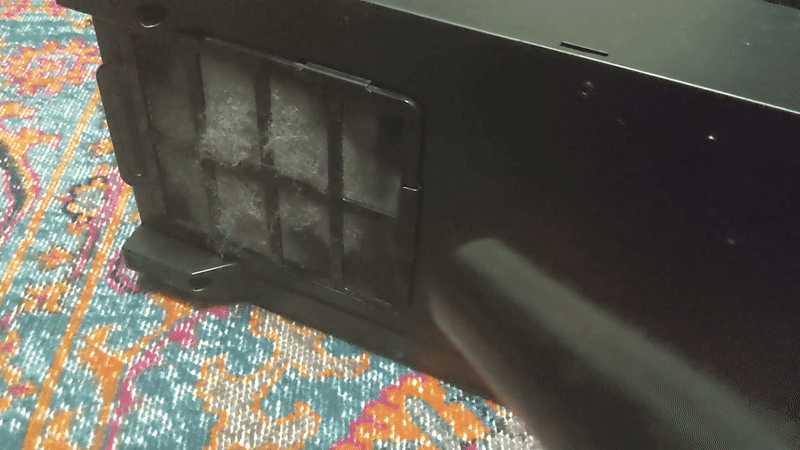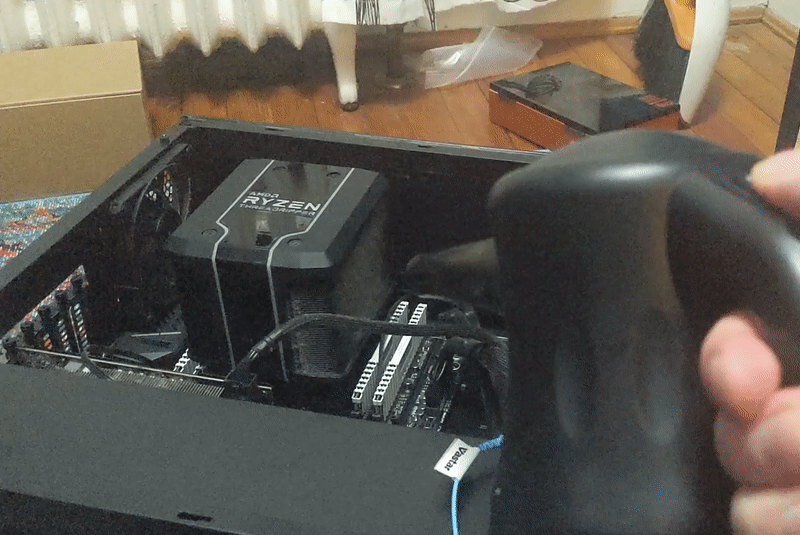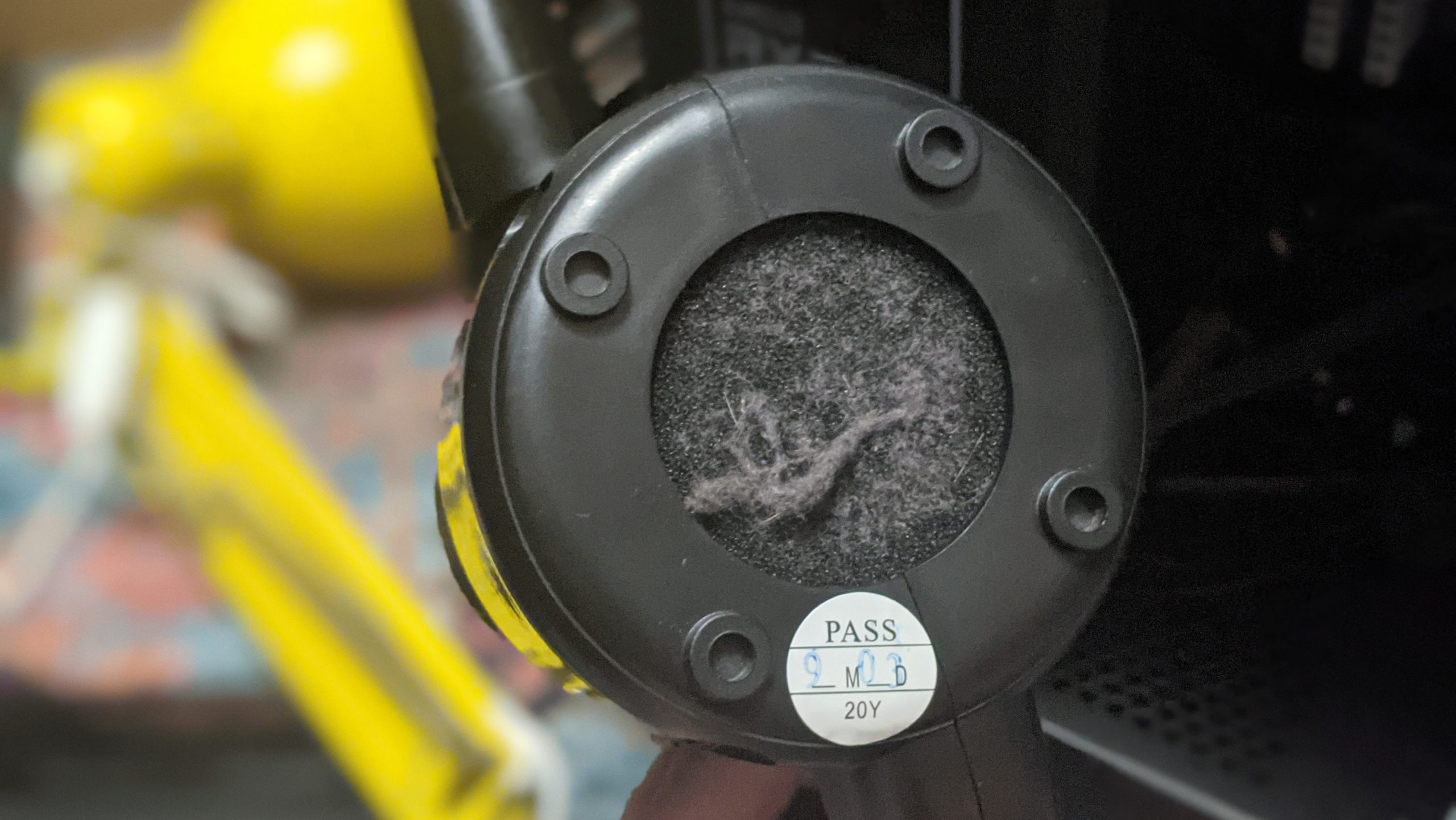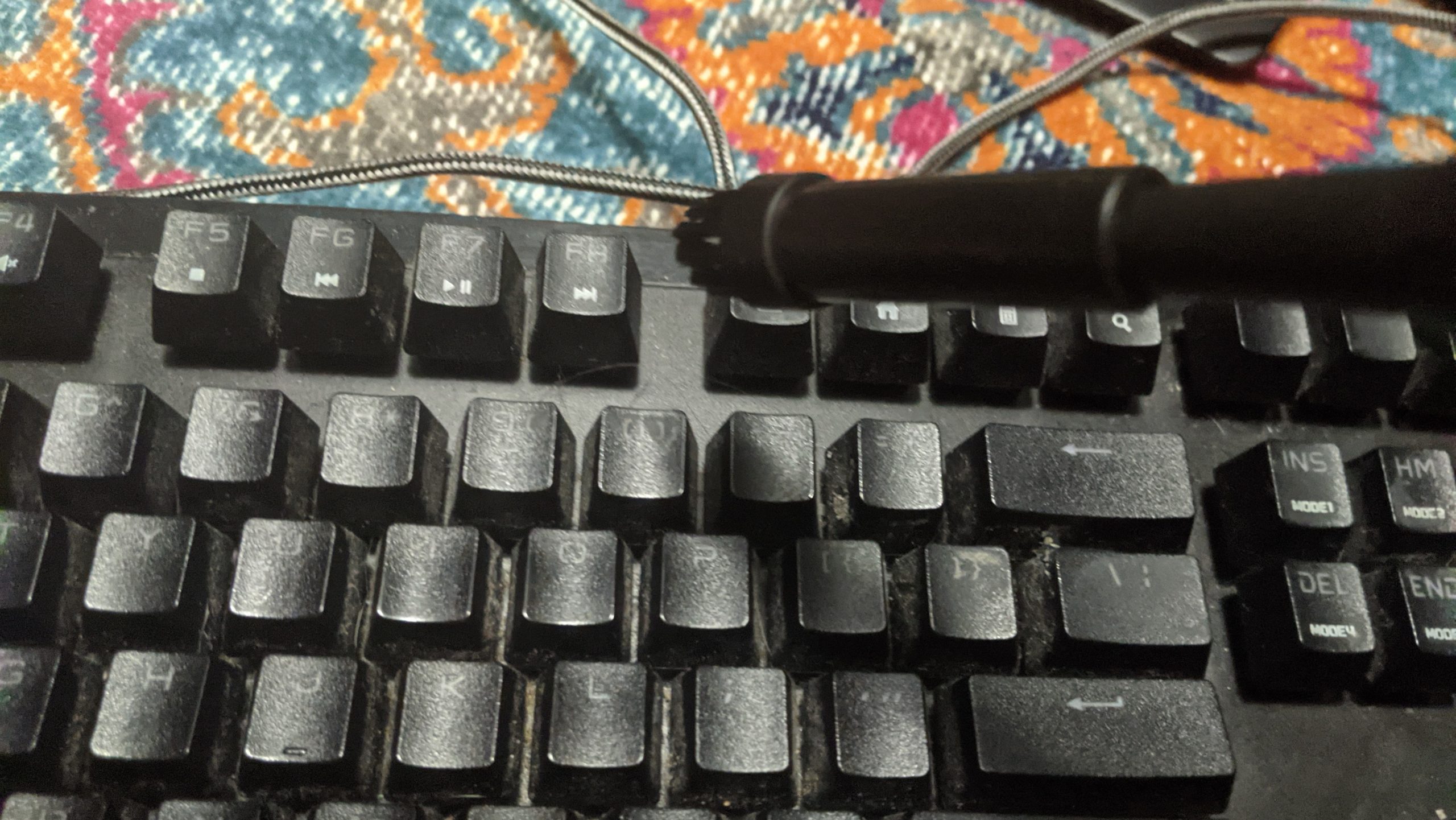You may be asking: Tom, why are you reviewing an electronic dust blower? Well, there are multiple reasons why I decided to pick up an XPOWER A-2 Airrow Pro. They’re pretty simple: I’ve come to truly hate ordering compressed air cans, especially when I forget to do so until dust becomes a problem, and I’ve sat idly by as my desktop computer sucked in increasing amounts of cat hair over the past year or so.
Compressed air is expensive — at least a few bucks per can, with non-bulk orders likely running in the $7-10 range — and it’s wasteful and bad for the environment. Each can consumes metal and lasts a few deep cleanings at best. According to Grist, while compressed air cans stopped using ozone-eating chloroflurocarbons (CFCs) after an international treaty began banning CFC use in 1987, the cans now contain hydrofluorocarbons (HFCs) instead. Those chemicals are typically HFC-134a or HFC-152a, which respectively pack “1,300 and 140 times the climate-changing potential of carbon dioxide.” HFC-134a also has a toxic production process.
The amount used per can may be minuscule, and your average computer owner may not go through them very quickly. But it adds up. Besides all this, there’s the irritation of noticing your CPU temps creeping up and realising you don’t have a can of compressed air handy — or allowing that to become an excuse not to dust the interior of your computer regularly.
So that’s what brings us to the XPOWER A-2 Airrow Pro. At $US50 ($65), it costs more than a few cans of compressed air, but it’s one of the more affordable alternatives, with models from competitor DataVax running $US86 ($112) and up. It’s listed as packing a 3/4th horsepower, 500-watt motor that can create 90 cubic feet a minute of air flow, though it lacks features found in more expensive units like a rechargeable battery (and isn’t advertised as having anti-static discharge protection). But it absolutely gets the job done.

XPOWER A-2 Airrow Pro
What is it?
Basically a tiny leafblower, but for blasting horrible dust off your heatsink.
Price
$US50 ($65)
Like
Does exactly what it says it does at a lower long-term cost than canned air; simple, easy, and fun to use.
Don't like
Cheap attachments; struggles to keep up with the higher setting; my editor wouldn't let me shoot cans with it due to a handful of user reviews mentioning that it can shoot sparks everywhere.
The Airrow comes with a set of attachments allowing it to get into all kinds of nooks and crannies or just blast indiscriminately. It’s got two speed settings, both of which are plenty. The standard nozzle set to the lower speed setting is loud, powerful, and quite capable of blasting off the appalling mix of dust, pet dander, and various other particular matter that had managed to evade case filters and settle on the inside of my PC.
A general rule of thumb is that there’s way, way more dust in your computer than is immediately visible. At a glance, it looked like there was just a thin blanket of dust accumulating on the side of my Wraith Ripper cooler. A few targeted gusts from the Airrow ejected a much larger cloud of dust from between the fins in a second or two. Similarly, it quickly took care of similarly hidden dust deposits in the power supply, nestled under components, and on the back side of the case.

Wham, boom, point this thing in the general direction of whatever you want cleaned and it’s done.
The Airrow was good enough at doing this that there was no need to use the higher power setting in the case, and I shudder to think how caked on dust would need to be before that became necessary. Dust acts both to restrict airflow and insulate hot internals, and whatever’s visible at a glance inside is likely the tip of the iceberg. My overclocked Ryzen 2950x CPU, which is in a case with unfortunately poor airflow and was occasionally reaching unwise temperatures of 70 degrees Celsius, immediately ran much cooler after a pass-over with the Airrow — somewhere between 5 degrees Celsius to 10 degrees Celsius lower, depending on the task at hand. The subsequent addition of more case fans has actually solved the issue, but then the Airrow will still come in handy because the increased air flow likely means faster dust accumulation.

It’s best to be cautious when using compressed air to scour case and component fans due to the possibility of forcing them to rotate faster than their bearings, potentially causing mechanical damage. The supposed dangers of doing so might be exaggerated, but there’s no reason not to keep fans stuck in a stationary position if you’re gonna force air past them. In any case, the Airrow’s lower power setting wasn’t strong enough to send every fan in the case whirring while it was pointed elsewhere.
Similarly, the risk of damaging components with electrostatic discharge from an air blower is the subject of much dispute. We didn’t see any evidence from scanning tons of user reviews that this is a real problem, but you’re still going to want to maintain some distance from exposed electronics when using this thing and move quickly to limit the amount of exposure.
More serious issues with the Airrow’s design include the attachments, which aren’t interlocking. Several reviews mentioned that unless they’re tightly fitted, they can go flying — something that happened a few times during our test run. Second, when using the more focused attachments or the Airrow’s high-power mode, it struggled to disperse heat from the motor and the blower became hot to the touch. That’s another reason to use keep it to short blasts; a very small number of A-2 user reviews mentioned sparks shooting out the end or a burning smell emanating from the unit.

This isn’t really a design problem per se, but the Airrow is powerful enough that dust it blows off can easily fly back around and get sucked into the washable intake filter. This may have contributed to it quickly heating up, but it’s not really a concern if you remember to brush it off. This is a trade-off, though — compressed air cans can get extremely cold to the touch or leave condensation on the inside of electronics if they’re used for improperly prolonged blasts.
The Airrow isn’t just for cleaning the inside of electronics. I’m not sure what I expected when using it to clean an embarrassingly filthy keyboard and mouse, as I’ve usually relied on cleaning wipes and just trying to shake out dust. It turns out that it’s quite good at removing dust, tiny little crumbs, and hair that have settled under keys, but it won’t easily remove that awful layer of grime that builds up on their side, even at the highest setting and using one of the attachments with brushes. What I’m trying to say here is this not a magical solution to being a gross little keyboard goblin; you’re still going to need to put some effort in to clean your keys. (If you really want that, you’re going to have to buy a specialty dishwasher-proof keyboard, or at least a washable silicone keyboard cover.)

While the Airrow is quite good at cleaning out various other niches, you’re (probably) not actually going to use it as a general-purpose cleaning tool. It can and will blow anything light and unsecured right off your desk or shelf right along with the dust, and the 3.05 m cord isn’t long enough to prance around the house aiming it at dirty fixtures. We didn’t have anything handy to test it with, but the Airrow is allegedly capable of pumping air into balloons, tires, doughnuts, and any other inflatables you might have around.
And if you’re a knucklehead like me, you can also use it to shoot empty cans at things. (Please don’t actually do this.)
Even $US50 ($65) may feel like a lot to drop on a peripheral device that doesn’t need to be used that often, and as we noted, other dust blowers can be a lot more expensive. But that’s an upfront cost that replaces the recurring and subpar investment of buying canned air every few months, and you’re probably going to use it a lot more regularly. If you have the cash to drop, the Airrow X-2 or another electric dust blower is the superior way to go.
README
- Electric dustblower that is more than a match for most dust problems.
- Superior alternative to canned air that is more powerful, never runs out, and saves more money the longer you use it.
- Doesn’t have a battery and isn’t advertised as electrostatic discharge proof.
- Seemed to cut corners on the attachments.
- May encourage you to be less lazy about cleaning your PC or other devices.
- Possibly has a very small risk of turning into an arc welder.
